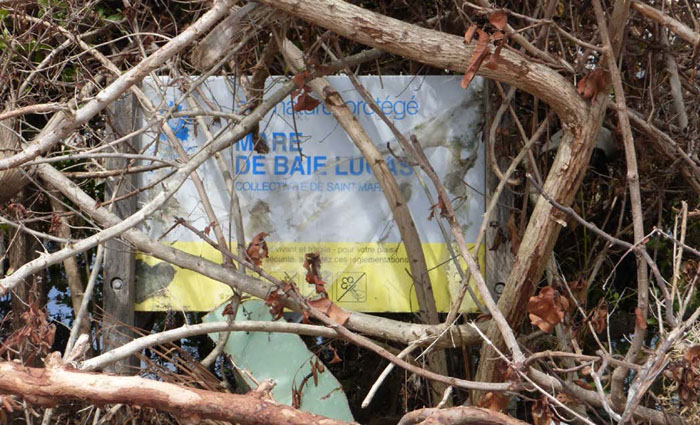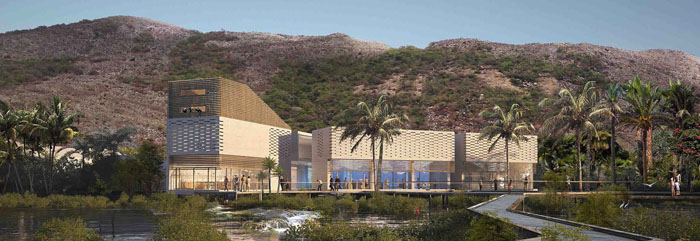Saint Martin was getting ready to celebrate the 20th anniversary of its nature reserve and had no intention of inviting Irma to join in the festivities.
Yet in just a few hours, this unprecedented category-5 hurricane brought winds of up to 225/mph and effectively erased the work of the past 20 years. For our natural heritage, the damage is quite considerable.
The mangroves were wiped out.
The underwater milieu and especially the coral, which was already suffering from effects of climate change, are ruined A massive amount of debris, carried by the wind, has polluted all of the protected spaces along the coastline and in the salt ponds.
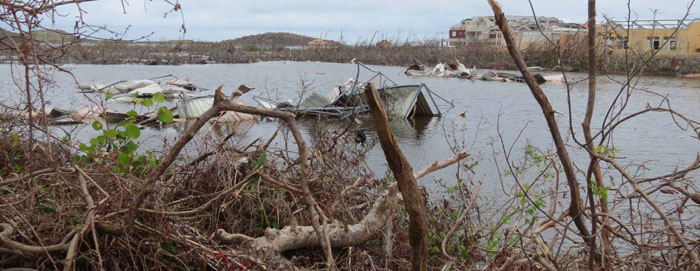
Various facilities put in over the past few years no longer exist or are badly damaged:
- Four bird observatori
- The Galion whale watching observatory
- Two walkways in the mangroves
- Dozens of informational sign
- Five shelter
- Eight demarcation buoys
- 30 mooring buoys
- A bird nesting raft; the underwater path and the wooden pier at Pinel Island
- Coral nurseries
- Artificial marine habitats
- The ongoing replanting along the coastline…
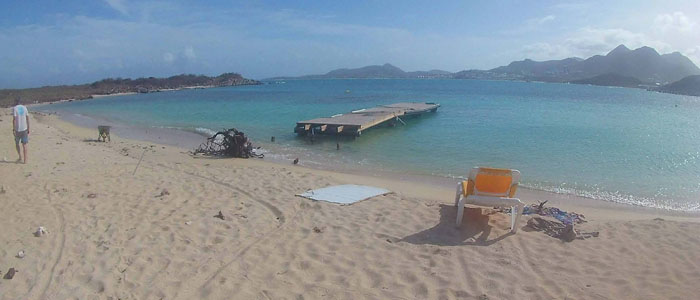
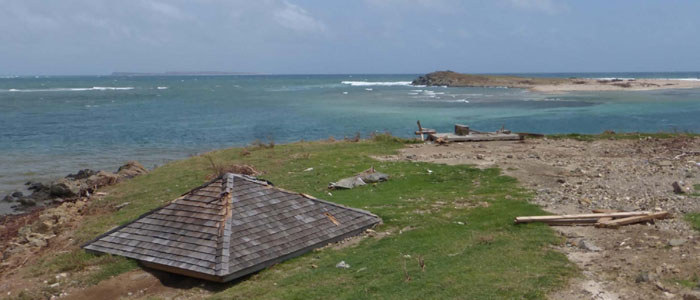
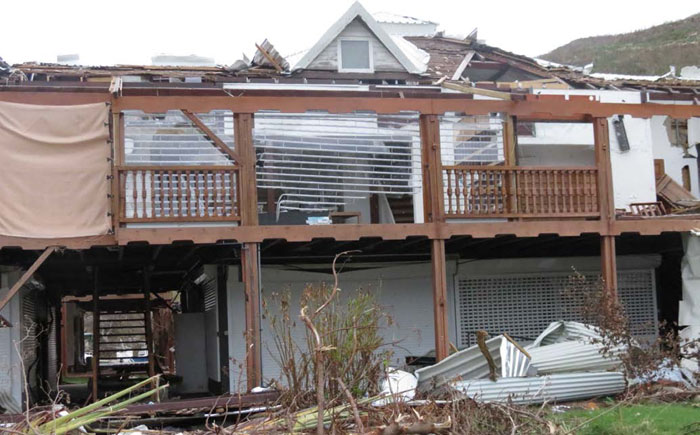 The offices of the Réserve in Anse Marcel were flooded, and two vehicles, luckily insured, cannot be used.
The offices of the Réserve in Anse Marcel were flooded, and two vehicles, luckily insured, cannot be used.
Sadly there is not enough insurance to cover all of these natural sites, where the damage is estimated at close to 850,000€ just for the various facilities.
More than half of the budget of the Réserve lies in its ability to self-finance in the amount of 470,000€ per year, thanks to economic and ecotourism activities permitted in these beautiful sites.
It is clear that the level of tourism will be non-existent for the rest of 2017, and close to zero in 2018.
So this self-financing will be reduced to almost nothing, just at the time when the Réserve needs this money more than ever, as its efforts to rebuild this natural heritage will be hindered.
The small islands of Tintamare and Pinel, and sites such as Creole Rock, Galion Bay, Petites Cayes, and Wilderness were the natural jewels of Saint Martin and its Réserve Naturelle, the last protected sites on the French side, highly valued by the population and the island’s visitors.
The devastation of this natural heritage will have severe consequences on ecotourism, nautical activities and the economy in general.
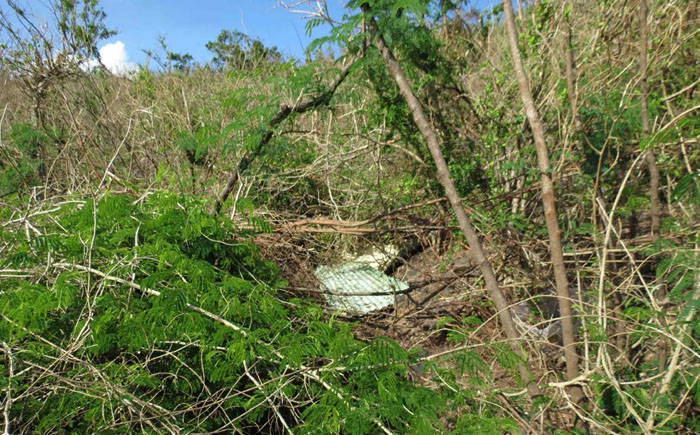
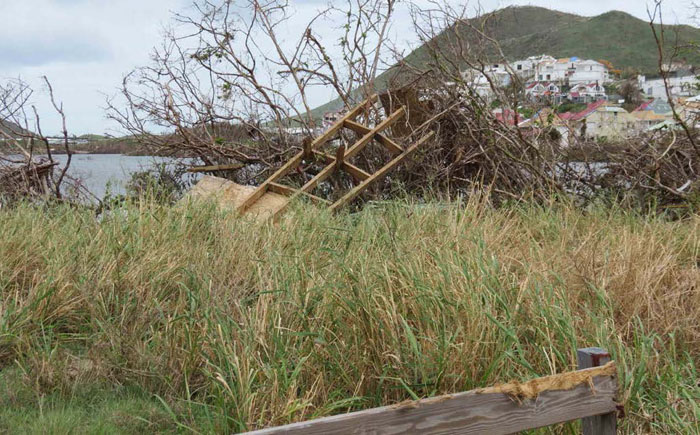
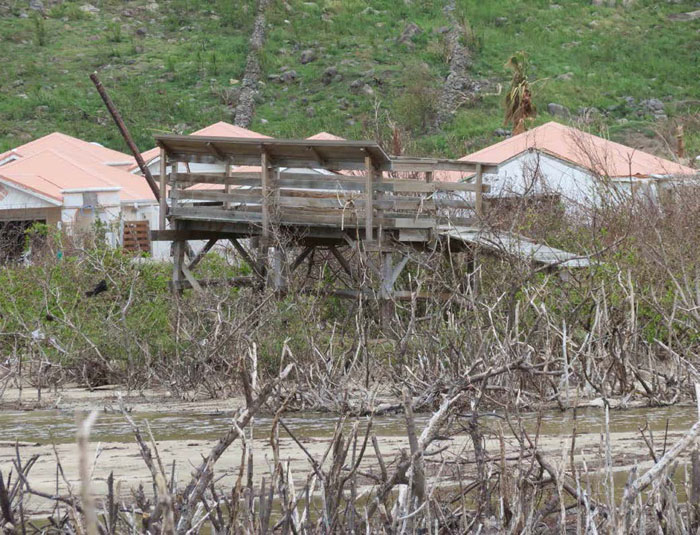
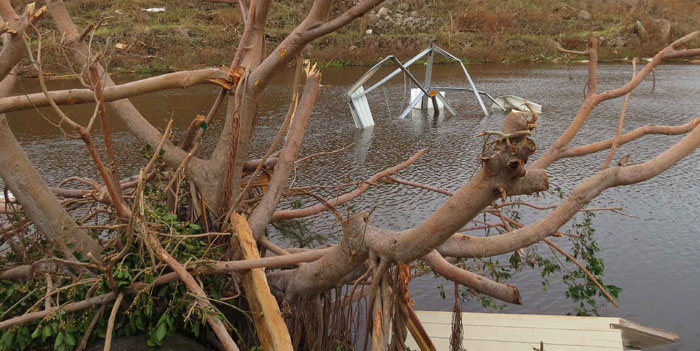

And yet we are not giving up the fight.
First we have to clean up all the sites on land, at sea, and in the wetlands.
The facilities and equipment that were destroyed or damaged, as well as public visitors’ centers, will be rebuilt thanks to financial support from the Conservatoire du Littoral.
We are already hard at work.
At the same time, thanks to financial aid from the French Biodiversity Agency, we hope as of this week to implement innovative ways to recover the biodiversity and ecological restoration in our terrestrial, marine, and shoreline milieus. Alone, and without the proper means, the job is colossal..
Impossible.
The population of Saint Martin and their property suffered massive damage and destruction when hurricane Irma struck the island.
For the biodiversity of the island, the worst is yet to come for many different species if we don’t intervene as quickly as possible to restore their natural habitats:
- coastal vegetation essential for sea turtles during their egg-laying season
- mangroves and ponds
- nurseries for marine species
- resting and feeding sites for more than 50 species of birds
- certain of which are on the endangered list; and marine habitats such as coral and sea beds that are indispensable to marine life in our region.
we have launched a fund-raising campaign on the gofundme website: https://www.gofundme.com/reserve-naturelle-stmartin-vs-irma,
to spur private donations.
And finally, we were one day away from requesting authorization for a building permit for the Caribbean Institute Of Insular Biodiversity.
Today, everyone is preoccupied with the urgencies of reestablishing our normal way of life.
And yet, we continue to heavily promote the realization of the Institute, which seems even more to be the perfect symbol of the reconstruction of Saint Martin, which should be exemplary, innovative, and respectful of the geological, geographical, and climatic specificities of our region. More than ever, the Caribbean Institute Of Insular Biodiversity is relevant after the damage caused by hurricanes Irma and Maria, in terms of the themes it proposes to develop, in the fight against the effects of climate change, the recovery of our biodiversity, scientific research, recommendations for urban planning, development, improvement of the island, and tourism strategies…
There was life before Irma, and there will be life after Irma. Our future, that of Saint Martin and its population, depends on the choices we make now.
My most sincere thanks go to the French Biodiversity Agency, the Conservatoire du Littoral, the Ministry of Ecology, the Réserves naturelles de France, all of our sponsors and our other partners.
Nicolas Maslach,
Director, Réserve Naturelle of Saint-Martin

